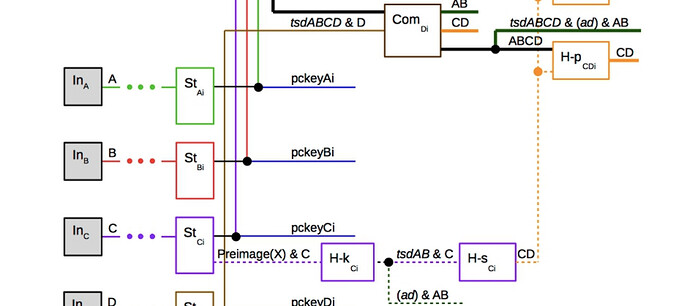Turns out John Law employs two relative timelocks using separate utxos, with TXID stability for one of his later payment channel constructions
Figure 14 and 15 show the separate locks. I’m unclear as to the purpose of the tsdAB lock, but it in effect allows for two “lanes” of timeouts, one for revocation of commitment transaction purposes, and one for HTLCs (revocation?). Once both relative timelocks are satisfied, the HTLC-payment transactions can be processed and neither can “reset” the either. The latter output is also a dust output, purely for control purposes.
This seems like a good “simple” example with txid stability.
Thanks for the tip @ajtowns
